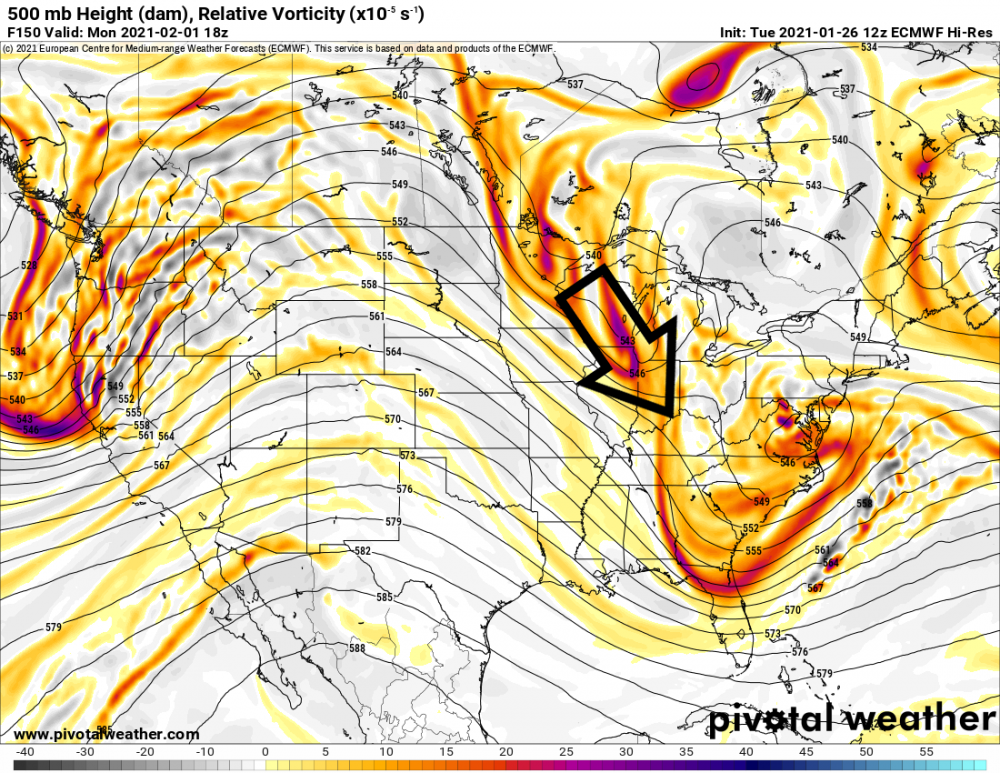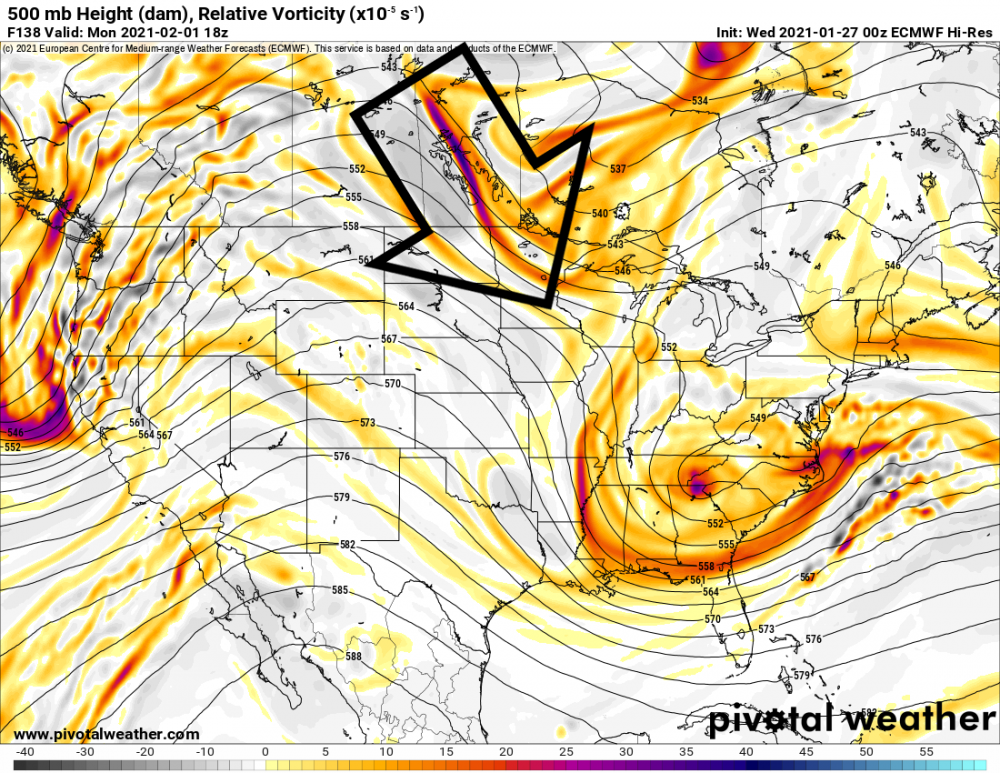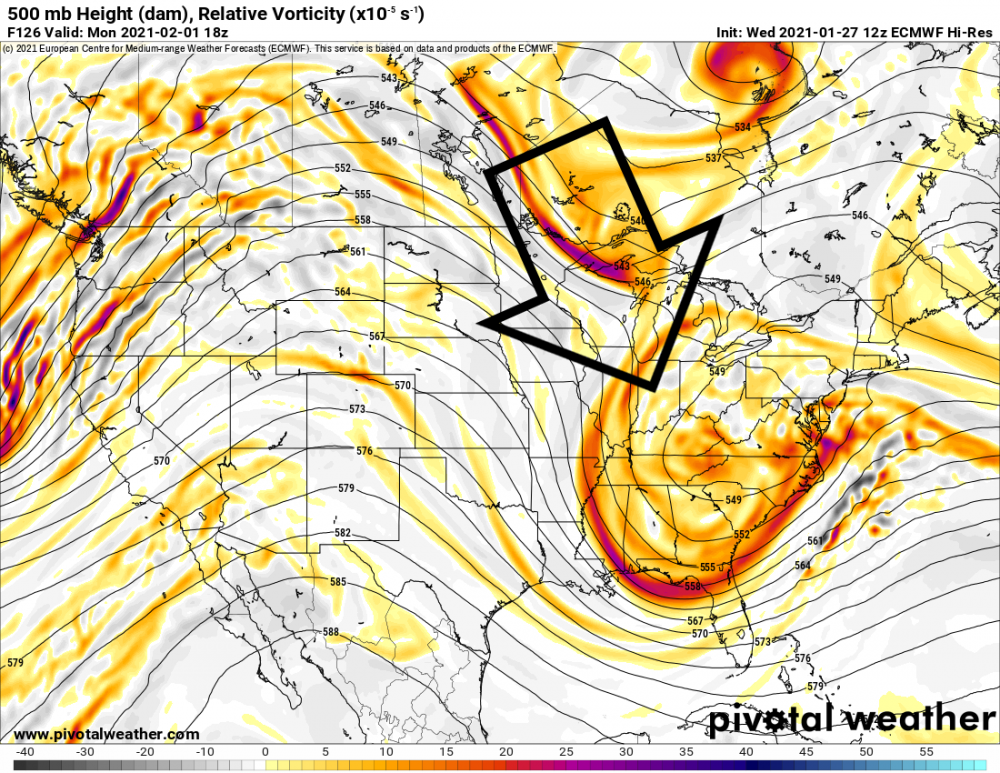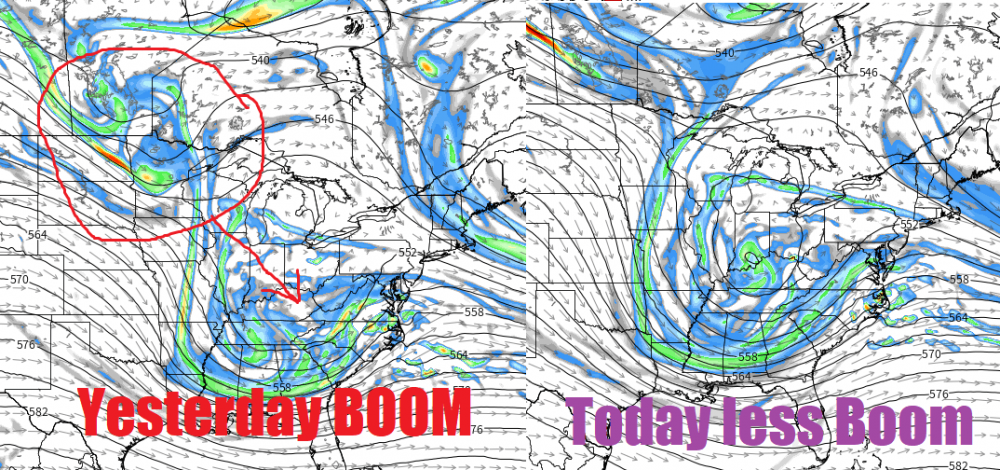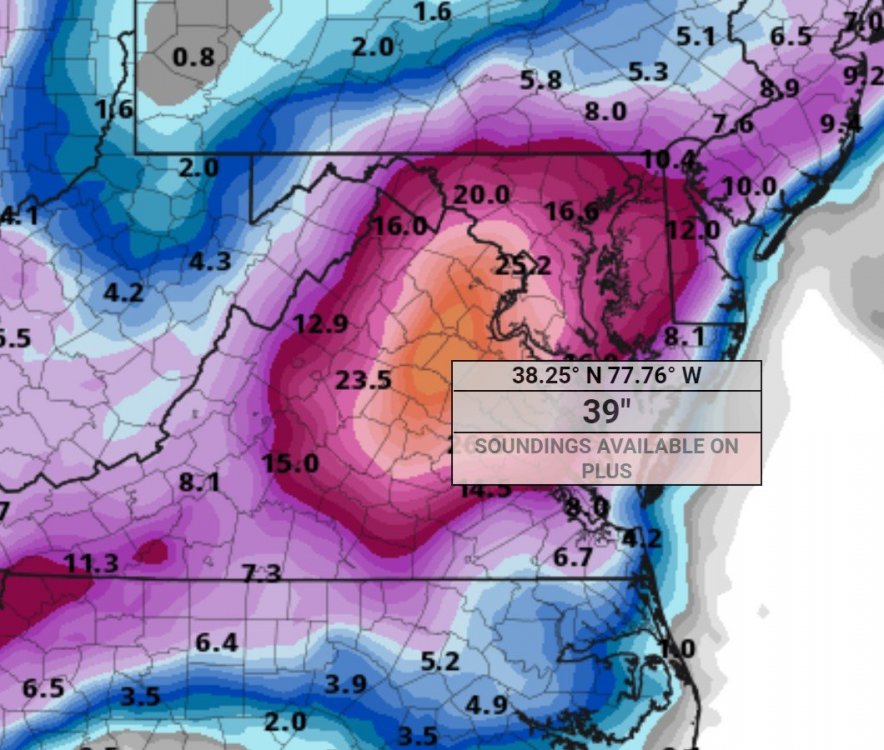
MN Transplant
Meteorologist-
Posts
17,363 -
Joined
-
Last visited
Content Type
Profiles
Blogs
Forums
American Weather
Media Demo
Store
Gallery
Everything posted by MN Transplant
-
500 low on the IN/OH border at 84. Backstream vort in Alberta. Same as 00z.
-
I'm not seeing any dramatic changes at 500mb.
-
It doesn't look quite as bad if you squint and don't worry about the specific low location, I think. The good part of the GFSv16 is that while we lose the column at some point late Sunday into Monday, the temps don't spike. DCA peaks at about 34, vs 39 on the GFS. Those looking for a good backside on the para should avert their eyes.
-
Para GFS is a nice 3-5" front end.
-
I'm not sure whether this is predictive or not, but it looks like one of the reasons why the GFS is a bit further north for longer is that it retains a connection to the upper level low/trough in central Canada. 12z GFS above, 00z Euro below, both for Sunday morning. You can see that the Euro is more divorced from the low/trough than the GFS is (also shown in the slight wind streak north of MN on the Euro that is less impressive on the GFS).
-
Simply put, the storms ahead and behind our system are helping to "buckle" the setup which digs our trough into a good spot for us. The GFS just has it happening a touch too late, allowing the warm air to come in early. PSU is right that it may be how the GFS is handling the thermal structure overall. I can also squint and maybe make the case that the GFS has a slightly more pronounced connection to the trough in northern Canada that keeps it from diving southeast as quickly.
-
Even with the mid-storm torch, it is very generally a 3" storm with the WAA and then a 0" (to the SW) to 5" (to the N and NE) backside event. So, a region-wide 3-8" storm, which isn't bad for the model that doesn't look quite right.
-
Torch
-
DC is losing the surface at 18z Sunday. The upside is that it has the precip coming in earlier than the other models so there is still snow on the front side.
-
Dew point at DCA for 00z Monday 12z NAM: 27 06z GFS: 35 06z GFS para: 32 00z Euro: 26
-
NAM at 84 is barely worth talking about, but it is nice and cold on the front side. Nice 4-6" hit.
-
Let’s be honest, per TT’s snow depth change it is a 2” storm on the front side with some wackiness on the back to pump it up.
-
Honestly, it is falling apart before that.
-
500 is not impressive on the 18z GFS.
-
'83 and '09 too.
-
The good thing is that this isn't some crazy setup. We have a nice big trough crossing the country and there will be a traditional transfer from a dying OH valley surface low to an East Coast low. The GFS keeps the trough more positively tilted as the axis gets towards 95, which is more of a large-scale pattern issue. The backside vort may help there, but it isn't the whole story (it is never one thing, of course).
-
It doesn't just overdo the winds, the gust product is truly awful. That is one area of the Euro that can be completely dismissed.
-
Two other things on the backside vort. The GFS has it, but like the 00z Euro run, it is too late to help slow/wrap up the UL low over us. And, the vort energy appears to be over Japan right now, so we are going to be waiting to see how the models handle it the rest of the week.
-
The other quick-look thing on temps is that the Euro is keeping a 3-4 degree dew point depression at the height of the precipitation (so, 35/32 at DCA). That's unlikely.
-
Ok, a few images. 12z yesterday, 00z last night, 12z today. All for Monday 18z. One of the most noticeable things here is that the vort behind the system helps to dig the trough and wrap up the 500 low in the two 12z runs, but it is too late to really help in last night's 00z run.
-
There is a vort that comes down from the Lake Winnipeg area that seems to play a very important role in the backside of the trough and slowing down the overall system. We'll have to keep an eye on that.
-
January Storm Term Threat Discussions (Day 3 - Day 7)
MN Transplant replied to WxUSAF's topic in Mid Atlantic
This is a shocking, shocking area for the deathband to set up. -
January Storm Term Threat Discussions (Day 3 - Day 7)
MN Transplant replied to WxUSAF's topic in Mid Atlantic
-
January Storm Term Threat Discussions (Day 3 - Day 7)
MN Transplant replied to WxUSAF's topic in Mid Atlantic
~1003mb in the Outer Banks at 120 -
January Storm Term Threat Discussions (Day 3 - Day 7)
MN Transplant replied to WxUSAF's topic in Mid Atlantic



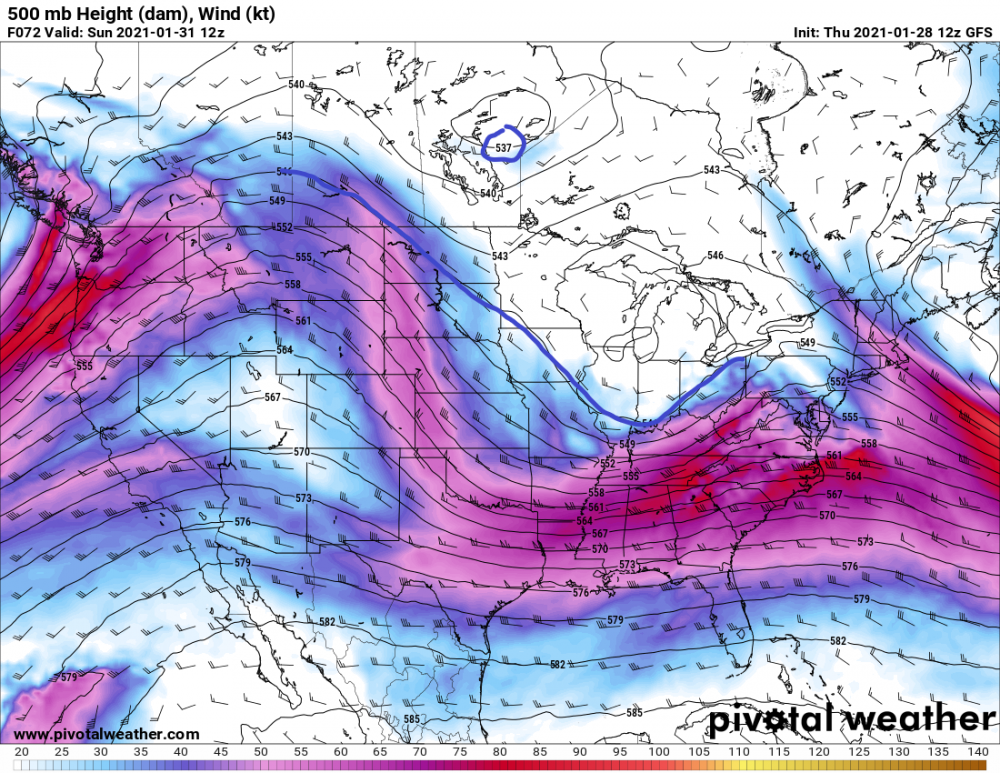
.thumb.png.b2780886e69aa57123b9c6dc157e2299.png)



